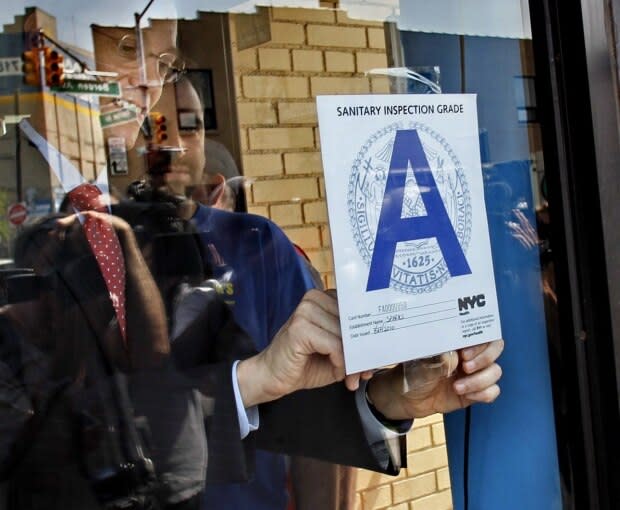Should Alberta restaurants be required to post health violations?
Talia Johnson still gets nervous when eating chicken.
Two years ago, Johnson was one of 22 people who got salmonella poisoning from eating food served at a booth at the Edmonton Folk Music Festival.
Her order of mango butter chicken left her in emergency surgery.
Johnson, who is now studying dietetics at the University of Alberta, said a health-inspection rating posted at the booth may have saved her that day.
"I think having a system would be helpful for the general public in trying to choose restaurants. It would help restaurants to take extra steps to be more accountable," she said.
A public restaurant-grading system in North America usually features a letter grade or a colour code. Typically posted in the front window of a restaurant, the system lets people know if a restaurant has been cited for health infractions.
Cities including Toronto, New York City and Las Vegas have public restaurant-grading systems for health violations at restaurants.
Cities in Alberta do not.
'Significant reduction'
Toronto's system, called DineSafe, has encouraged restaurants to improve sanitary practices, said Sylvanus Thompson, associate director of Toronto Public Health.
Under DineSafe, restaurants must post one of three notices: green, which means pass with minor or no infractions, yellow, a conditional pass meaning a restaurant has some infractions that need to be corrected, and red, which signals the restaurant is closed to the public.

Before DineSafe was implemented in 2001, fewer than half of restaurants were in compliance with health regulations, Thompson said.
Now more than 90 per cent of the restaurants are in compliance.
"We are seeing better compliance. Owners and operators value this system and the public really enjoys having this system. There is a lot of value to have a system like this one."
Other municipalities in Canada, including Montreal, are adopting similar programs.
Debra Langier-Blythe, a former public health inspector with Alberta Health Services, said Alberta should do the same.
"It's visible to the average person on the street walking by. I think it ... makes the owners of the restaurant more aware of the importance of good practices in the restaurant."
'Not an ideal situation'
Restaurant representatives are critical of such programs.
"I don't think it's fair to try and group all these restaurants and any sort of violations they have into a red, yellow or green thing," said Mark von Schellwitz, vice-president, Western Canada, with Restaurants Canada.
A restaurant can get a yellow ranking for minor violations like a "cracked tile or shelving" — issues von Schellwitz described as "easy fixes."

"Sometimes the fix can be done within a day and yet then they have to get an inspector to come back to reinspect to get that yellow back to a green," he said.
"It's just not an ideal situation at all for the restaurateur who may have had an impeccable record and then there's one little thing and suddenly they're in a yellow category."
Alberta's online health-inspection reports list all restaurants and any issues, categorizing violations as critical or non-critical.
"Bottom line, there is a very good restaurant-inspection system in place already in Alberta. Anybody who wants to find the inspection records of any restaurant can do so," von Schellwitz said.
He said reviews on social media and websites like Yelp already warn potential diners of a restaurant's quality and encourage restaurant owners to be responsible.
Bottom line, there is a very good restaurant inspection system in place already in Alberta. - Mark von Schellwitz, Restaurants Canada
For its part, Alberta Health Services said it has reviewed many restaurant-grading systems and finds them too simplistic.
Peter Keith, co-owner of Edmonton restaurant Meuwly's, said he isn't opposed to a public ranking system as long as it's done right.
"Health and safety is incredibly important and it's at the heart of what we do when we're feeding people," Keith said.
"I think as long as something like this is approached with a lot of thought, a lot of research, and a lot of engagement with all the stakeholders, then I think it would be a very positive change."


